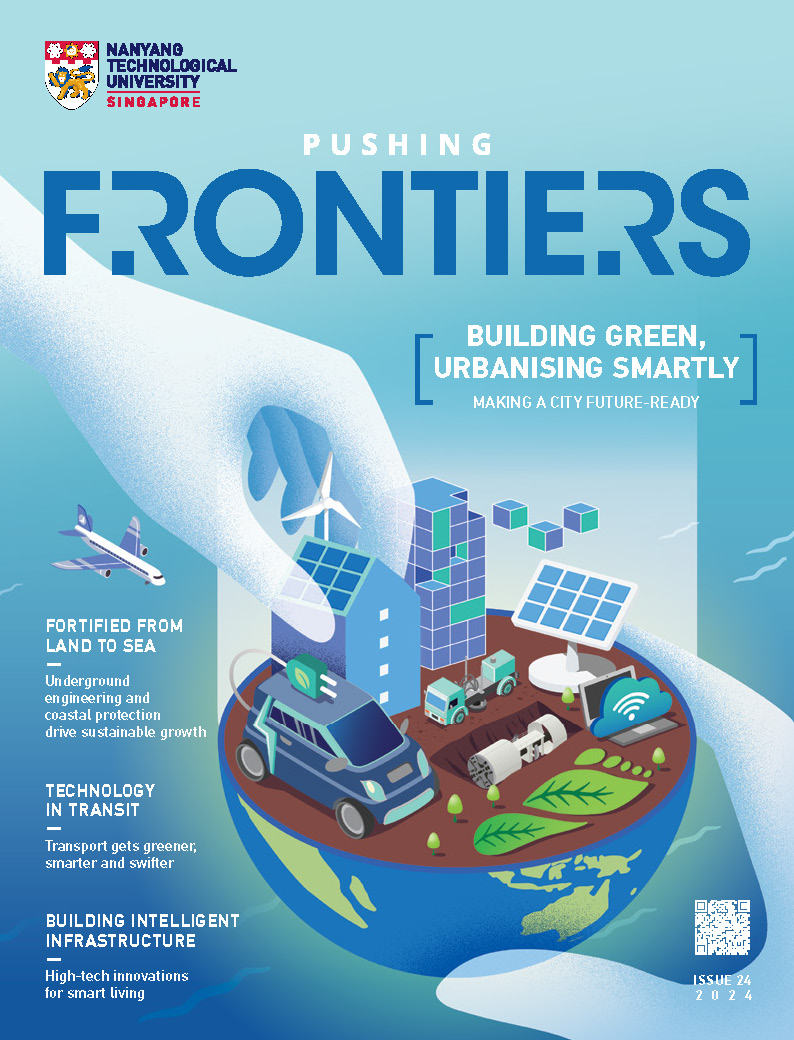Commentary: why calm winds are bad for urban cities
 From March 25 to 27, Singapore experienced hazy conditions as pollutant levels rose across the country.
From March 25 to 27, Singapore experienced hazy conditions as pollutant levels rose across the country.
Air quality was affected by elevated levels of PM2.5 pollutants, with the Pollutant Standards Index reaching a moderate level of 77.
A commentary published in The Straits Times by Associate Professor Steve Yim from the Asian School of the Environment and the Lee Kong Chian School of Medicine explained that this hazy episode was primarily due to unusual local atmospheric conditions, rather than transboundary haze from regional peatland or forest fires.
Using advanced atmospheric monitoring technology developed by his team, called the 3-Dimensional Real-time Atmospheric Monitoring System (3DREAMS@SG), calm winds in Singapore's lower atmosphere were detected. Such weather conditions hinder the dispersal of pollutants.
The 3DREAMS@SG network comprises three sophisticated stations with advanced Light Detection and Ranging (Lidar) systems capable of measuring wind patterns and aerosol concentrations vertically up to 12km.
The data collected provides detailed second-by-second analysis of air particle movements and pollutant sources, including urban emissions, haze, or volcanic particulates.
Currently, two stations are operational, located at NTU’s Earth Observatory of Singapore and Raffles Girls’ School (Secondary), with a third station planned for the northern part of Singapore later this year.
This cutting-edge technology enables scientists to capture a comprehensive three-dimensional view of air pollution movement across Singapore, significantly enhancing air quality forecasting capabilities.
Assoc Prof Yim noted that extreme atmospheric conditions might become increasingly frequent or severe with global warming, underscoring the importance of continued monitoring and research.


.tmb-listing.jpg?Culture=en&sfvrsn=370a7c71_1)


.tmb-listing.jpg?Culture=en&sfvrsn=8fcd2938_1)
.jpg?sfvrsn=991791b1_0)
-clustering-around-a-build-up-of-toxic-beta-amyloid-(red)-(lkcmedicine-ntu-singapore-research).jpg?sfvrsn=115ae05_0)

.tmb-listing.jpg?Culture=en&sfvrsn=29c7e020_1)
.tmb-listing.jpg?Culture=en&sfvrsn=332749b0_1)
.tmb-listing.jpg?Culture=en&sfvrsn=55153609_1)
.tmb-listing.jpg?Culture=en&sfvrsn=6c7b6f1f_1)
.tmb-listing.jpg?Culture=en&sfvrsn=ab6472c8_1)



.tmb-listing.jpg?Culture=en&sfvrsn=a1456c00_1)

.tmb-listing.jpg?Culture=en&sfvrsn=d16821ec_1)
.tmb-listing.jpg?Culture=en&sfvrsn=e543a521_1)

.tmb-listing.jpg?Culture=en&sfvrsn=83fa0b1d_1)


-and-professor-hu-xiao-from-ntu-singapore.tmb-listing.jpg?Culture=en&sfvrsn=d0bcffec_1)
























